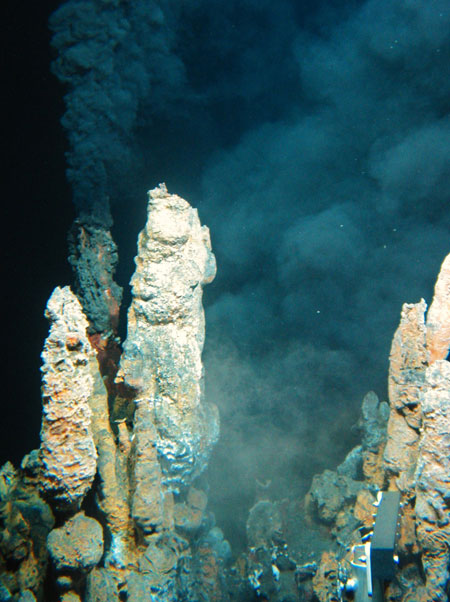
Surprise: Wind Above Affects Seafloor a Mile Below

The waters in the deepest depths of the oceans have long been considered to be a place apart from the surface waters of the sea. But new research suggests these two levels of the ocean are more connected than previously thought.
Swirling currents generated by winds at the sea's surface may reach deep enough to transport ocean-bottom waters — and the heat, chemicals and creatures that they carry — for hundreds of miles, a new study finds.
"What's going on in the atmosphere can actually affect what is going on deep in the ocean, even though it's buffered [in the case of this study] by a mile-and-a-half of water," said Diane K. Adams, a biologist at the Woods Hole Oceanographic Institution in Massachusetts, who led the research detailed in the April 29 issue of the journal Science.
Adams thinks that the sky-to-seafloor connection is made by strong currents, called eddies, which are frequently spawned by winds gusting through mountain gaps and across the ocean's surface. The water formations can span hundreds of miles in diameter, resembling large water-borne tornadoes.
Deep ocean influence
While these whirling surface waters are well-recognized, many scientists have assumed that very little stirs in the dark depths of the ocean. Yet they also know that piping-hot hydrothermal vents on the seafloor somehow influence the composition of the entire ocean by dispersing calcium, magnesium and iron, among other chemicals. Similarly, larvae of snails, limpets and other marine species that rely on the isolated vents for life have been found to pop up at vents considerable distances apart.
"This is an important phenomenon that requires explanation," said Paul Johnson, an oceanographer at the University of Washington in Seattle, who was not involved in the study.
Sign up for the Live Science daily newsletter now
Get the world’s most fascinating discoveries delivered straight to your inbox.
To shed some light on the mysterious dispersal, Adams and her colleagues set out in 2004 on a two-day, 500-mile (800-kilometer) journey off the coast of Central America. Once at their research site, they dropped instruments into the 1.5-mile-deep (2.4 km) water to monitor the currents and their contents. They made several measurements over the next six months, and then returned to the remote location in 2007 for more.
Surprisingly, the team found huge drops in the flux of chemicals and larvae around hydrothermal vents at the seafloor coinciding with periods of extremely fast, dynamic currents.
Swirling surprise
The team was not sure what to make of these currents at first. But in response to a colleague's offhand comment that the water's behavior "looked like an eddy," they began to study satellite data of the sea's surface. Sure enough, the images, and subsequent model simulations, tied the strong deep-sea currents to swirling surface eddies.
"This could be the mechanism driving the long-distance transport of chemistry and biology that we were seeing," Adams said. "The larvae are produced at vents and generally stay near vents. But when eddies go by, they appear to send all the stuff that was in the vents into the ocean and potentially to another vent site."
The researchers report that eddies typically appear seasonally and can be sensitive to atmospheric variations such as El Nino.
While "not conclusive proof" that these eddies impact the distribution of seafloor hydrothermal vent larvae, Johnson said the new study's explanation is "very plausible."
"If this process turns out to be more general than just at this site," he said, "it will help to dispel the incorrect assumption that the deep abyssal bottom waters are 'seasonless' and quiet."
This story was provided by OurAmazingPlanet, a sister site to LiveScience.









